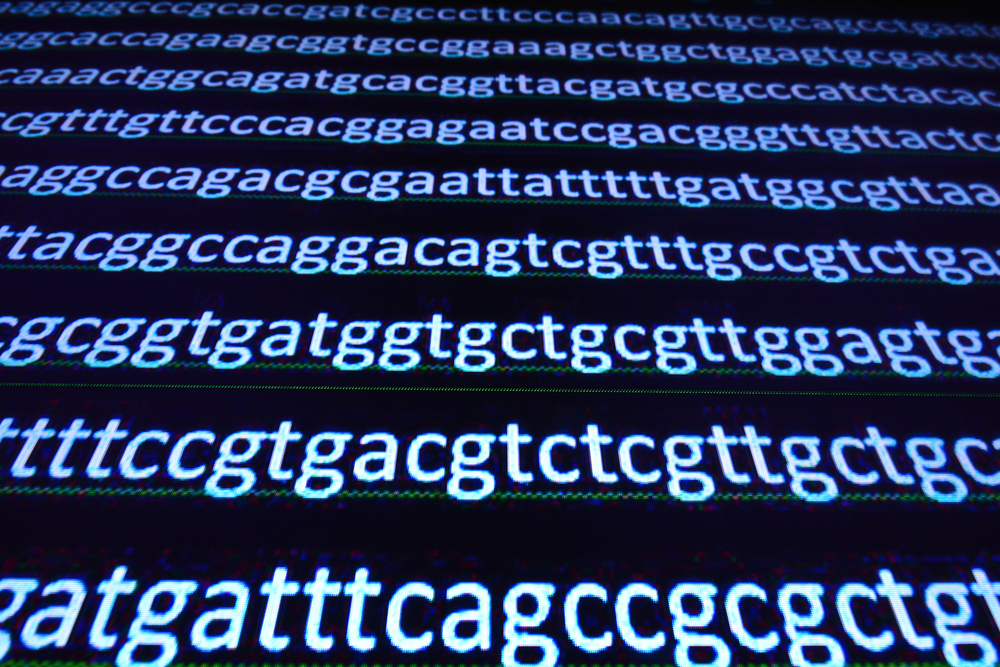Mutations in Non-collagen Genes Can Worsen Alport-related Kidney Problems, Study Suggests

Although typically not considered a cause of Alport syndrome, mutations in the LAMA5 gene, in combination with those in collagen IV (COL4) genes, can affect the clinical presentation and aggravate the severity of kidney problems linked to this disease, a study has found.
These findings validate the relevance of non-collagen genes in the syndrome, and underlines the need for more expanded genetic testing in families who carry two mutated COL4 genes, commonly referred to as a digenic pattern of inheritance, to better define clinical severity and recurrence risk.
The study, “Non-collagen genes role in digenic Alport syndrome,” was published in the journal BMC Nephrology.
Alport syndrome is caused by mutations in the genes that provide the instructions for making type IV collagen, including mutations in the COL4A3, COL4A4, and COL4A5 genes. Collagen IV is a connective protein essential for the filtering role of kidneys. It is a key component of the glomerular basement membrane (GBM), a cell layer essential for filtering out waste products at the kidney glomeruli.
Using an approach called next-generation sequencing (NGS), some studies have identified individuals with Alport syndrome who have a digenic pattern of inheritence.
In these people, the severity of kidney involvement was seen to correlate with the number of mutated COL4 genes. However, a digenic inheritance of COL4 gene variants only partially explains the variability of disease symptoms.
The influence of other non-collagen genes has been proposed but has not been confirmed yet.
To address this, researchers in this study investigated the genetic background of patients from three Italian families who were suspected of digenic inheritance and had worse kidney problems than expected for a dominant type of inheritance or whose family history suggested transmission from both parents.
Employing a method of NGS called whole-exome sequencing (WES), they looked for variations in other kidney-related genes, and evaluated their association with the type and severity of kidney problems within each family.
Results revealed that three members carried mutations in the LAMA5 genes plus a disease-causing mutation in COL4A4 or COL4A5.
LAMA5 gives instructions for the production of laminin, an extracellular matrix protein that sits outside cells with a mesh of other proteins and sugars, and plays an important part in maintaining tissue organization, namely in the kidney.
The combination of LAMA5/COL4 variants were always associated with the most severe cases of Alport syndrome within the families studied, in line with a dual genetic cause for their disease.
The presence of both mutations was associated with unique clinical findings, seen in kidney biopsies, such as kidney cysts and fusion or retraction of podocyte foot processes, which are cell structures important for blood filtering. These signs “should be regarded as hallmark of a LAMA5/COL4 variants coinheritance,” according to the researchers.
Consistent with this interpretation, a recent study also reported that the combined inheritance of COL4A5 and LAMA5 variants was possibly behind the spectrum of kidney problems present in a family with heritable hematuria (blood in urine).
In addition, the researchers also found a mutation in another gene called NPHS2. This gene provides instructions for making podocin, a protein primarily found in certain cells of the kidney glomeruli called podocytes, which are important for retaining larger molecules such as proteins in blood and allow sugars and salts to be expelled in the urine.
In this patient, the NPHS2 variant was present together with mutations in COL4A4 and LAMA5, suggesting a “role of other kidney disease related-genes as modifiers,” the researchers wrote.
According to the team, these results reinforce the existence of a digenic form of Alport syndrome, “unmasking the role of non-collagen genes, essential for the GBM formation and stabilization.”
Moreover, these findings “change the clinical management of patients with Alport syndrome,” they said, highlighting the importance of a broad NGS approach to include other genes important for the makeup of the kidney basement membrane and podocytes.
In particular, they “urge the need to investigate for a LAMA5 mutation in all [Alport syndrome] individuals in which kidney biopsy is positive for the presence of renal cysts and podocytes foot processes fusion or retraction.”







Luis C Banda
I have made it a point to not let the constraints of kidney disease define who I am. I positively believe I will receive the kidney that I need; it is my intention to help and inspire others who are in the midst of this same battle.
My name is Luis Banda, I am 45 years old, and I am looking for a living kidney donor. You can help me by sharing my story on your social media timelines, each share gets me closer to finding my living kidney donor.
Using an innovative desensitization technique, Cedars Sinai can eliminate a recipient’s reaction to an incompatible blood type, allowing me to receive and benefit from a kidney transplant.
Please help me by Google Search: Donor4Luis